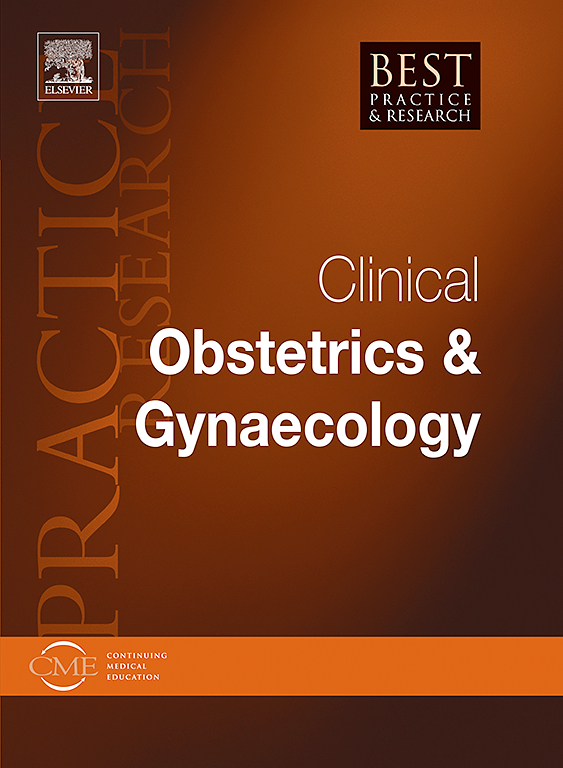3rd trimester ultrasound assessment
IF 4.1
2区 医学
Q1 OBSTETRICS & GYNECOLOGY
Best Practice & Research Clinical Obstetrics & Gynaecology
Pub Date : 2025-03-19
DOI:10.1016/j.bpobgyn.2025.102593
引用次数: 0
Abstract
The third-trimester scan allows not only the assessment of foetal growth but also its presentation and anatomy, and placental, amniotic fluid, and umbilical cord anomalies. Although there is a great disparity when considering its recommendation, most recent studies raise the question for its usefulness considering its impact in a potential reduction of perinatal morbidity and mortality. For this to be a reality in a population-wide setting, a systematic approach should be made considering performing it between 35 + 0 and 36 + 6 weeks’, including the assessment of estimated foetal weight, foetal Doppler (umbilical and middle cerebral artery), placenta, amniotic fluid, foetal anatomy, and presentation. In high-risk cases, additional evaluation of the placenta, umbilical cord, or advanced foetal anatomy assessment can be warranted. Furthermore, pre-defined and evidence-based protocols should be followed after anomalies are detected in order to improve maternal and perinatal outcomes.
妊娠晚期超声检查
孕晚期扫描不仅可以评估胎儿的生长情况,还可以评估胎儿的表现和解剖结构,以及胎盘、羊水和脐带的异常。虽然在考虑其建议时存在很大的差异,但最近的大多数研究都提出了考虑到其在可能降低围产期发病率和死亡率方面的影响的有用性问题。为了在全人群中实现这一目标,应该考虑在35 + 0和36 + 6周之间进行系统的方法,包括评估估计的胎儿体重、胎儿多普勒(脐动脉和大脑中动脉)、胎盘、羊水、胎儿解剖和胎儿表现。在高危病例中,可以对胎盘、脐带进行额外的评估,或进行高级胎儿解剖评估。此外,在发现异常后应遵循预先定义的循证方案,以改善孕产妇和围产期结局。
本文章由计算机程序翻译,如有差异,请以英文原文为准。
求助全文
约1分钟内获得全文
求助全文
来源期刊
CiteScore
9.40
自引率
1.80%
发文量
113
审稿时长
54 days
期刊介绍:
In practical paperback format, each 200 page topic-based issue of Best Practice & Research Clinical Obstetrics & Gynaecology will provide a comprehensive review of current clinical practice and thinking within the specialties of obstetrics and gynaecology.
All chapters take the form of practical, evidence-based reviews that seek to address key clinical issues of diagnosis, treatment and patient management.
Each issue follows a problem-orientated approach that focuses on the key questions to be addressed, clearly defining what is known and not known. Management will be described in practical terms so that it can be applied to the individual patient.

 求助内容:
求助内容: 应助结果提醒方式:
应助结果提醒方式:


